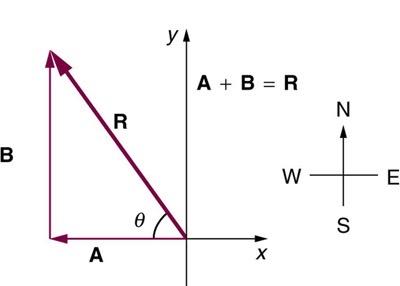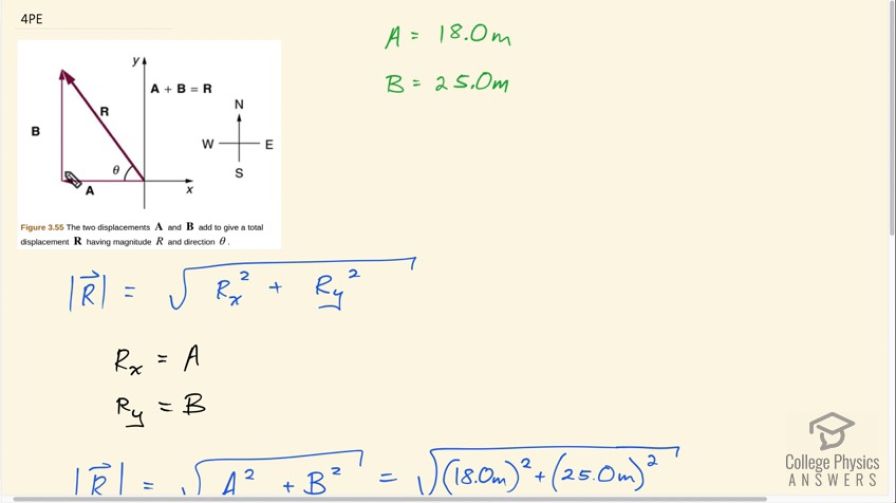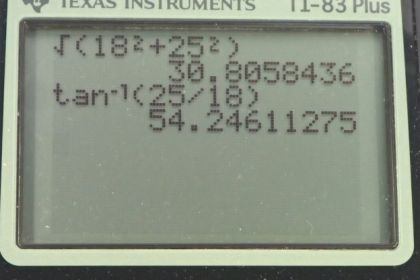
It's a bit unclear how to interpret what the question means by "compass direction". According to Wikipedia, an "absolute bearing" on a compass is measured in the clockwise direction starting from North, in which case this answer would have an absolute bearing of . Other systems of measuring with a compass require being specific about which cardinal direction one is measuring with respect to.
Solution video
OpenStax College Physics, Chapter 3, Problem 4 (Problems & Exercises)

Calculator Screenshots
Comments
How is tan-1(25/18) 54.246? When I calculate it on my calculator it answers .94677. How do you change this answer to degrees
Hi tumbled129, this really depends on the brand of calculator you're using. Often there will be small "rad" or "deg" displayed if you look closely at your screen, and you'll have to either look up a manual for your calculator or use some trial and error button pushing to see how to change it. Alternatively, although this is inconvenient but it works, you could convert radians into degrees by multiplying by 180/3.14159. 0.94677 radians * 180 / 3.14159 = 54.246 degrees.
Good luck!
Shaun
hon my phone when i press 2nd function 25/18 then it gives me .94677 then i press the Tan-1.
The answer to the degrees is 35.75. 54.2 is wrong
Hi Joe, thank you for this comment. We're both right! :) It's important to be more specific about the position of the angle however. In the figure the angle theta is positioned North of West. The direction is . Equally correct, but requiring explicit directions, is . is the complement to .
All the best,
Shaun


